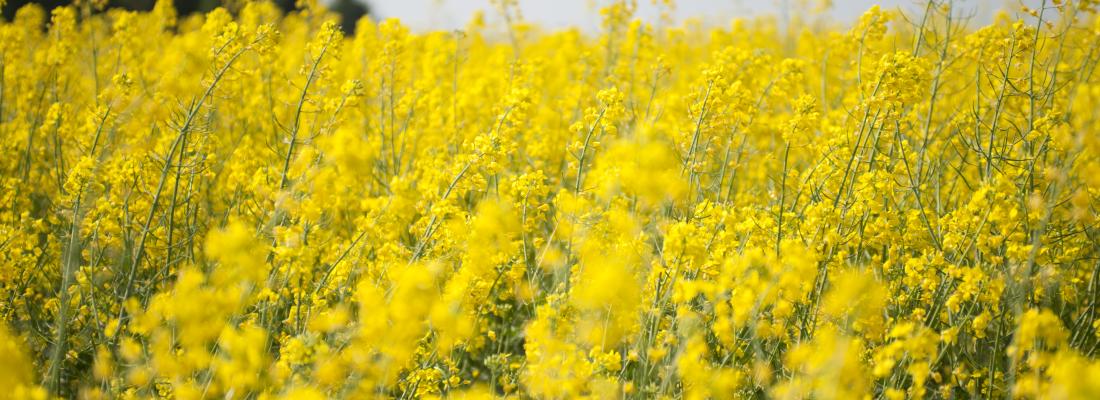Agroecology Reading time 3 min
Winter rapeseed – the benefits of its association with companion legumes
Published on 11 January 2018

The evolution of agriculture towards sustainability notably requires the implementation of new practices that can limit the use of synthetic pesticides and fertilisers. These practices also include the association of a cash crop with companion plants that are not harvested.
Widely cultivated in the northern hemisphere, rapeseed remains susceptible to insects and competition from weeds. INRA scientists and their colleagues have evaluated the effects of its association with different companion plants on the encroachment of plots, nitrogen nutrition and the yields of winter rapeseed crops, and analysed their sources of variability.
In practice, they compared 79 open-field trials combining winter rapeseed and companion legumes. These trials covered a broad range of pedoclimatic conditions and cultivation practices in the north-western half of France.
Rapeseed and companion legumes, a winning combination…
Sown at the same time at the end of summer, the rapeseed crop and its companion plants grew together during the autumn until the winter frosts. The companion legumes were susceptible to frost so they might be destroyed naturally by the cold during winter.
During the autumn growth phase, the rapeseed and companion plants, but also weeds, competed for nutrients and light. The rapeseed was less affected by this competition when the companion plants were legumes because the latter competed less for nitrogen due to their ability to fix atmospheric nitrogen.
At the start of winter, the presence of companion plants enabled a reduction in weed biomass of between 38% and 52%, without any species appearing to be more efficient than another. At harvest, non-legume companion plants had reduced the rapeseed yield (580 kg/hectare less than with rapeseed alone), but on the other hand, companion legumes such as field bean alone or in a mixture with lentil, caused an increase in this yield of between 160 and 120 kg/hectare.
Field bean, lentil or a mixture of the two also enabled a reduction in nitrate inputs of up to 25% (30-40 kg/hectare) without the crop yield diminishing significantly.
… whatever the cultivation or environmental conditions
The performance of each of the companion plant species was generally little dependent on the conditions prevailing during the trials, thus underlining the validity of the results in a broad range of cultivation and environmental conditions.
All these results showed that the cultivation of rapeseed in the presence of non-harvested companion legumes is a promising practice, particularly on nitrogen-poor soils; field bean alone or mixed with lentil displayed the best overall performance. Further studies now need to be undertaken to precisely evaluate the socioeconomic and environmental value of using companion plants, so as to prove the sustainability of this practice.
Non-legume species have gradually been abandoned to the benefit of legumes because of their excessive competition with rapeseed crops. The companion legumes used alone were mainly field bean (Vicia faba), lentil (Lens culinaris) and spring field pea (Pisum sativum).
They were sown at 75% of the rate generally used for monocultures of the species concerned.
Three mixtures were also tested: field bean + lentil; grass pea (Lathyrus sativus) + fenugreek (Trigonella foenumgraecum) + lentil; common vetch (V. sativa) + purple vetch (V. benghalensis) + Egyptian clover (Trifolium alexandrinum). The sowing density of each species in a mixture was reduced proportionally to the number of species.
| Verret V., Gardarin A., Makowski D., Lorin M S., Butier A., & Valantin-Morison M. (2017). Assessment of the benefits of frost-sensitive companion plants in winter rapeseed. European Journal of Agronomy 9: 93. 10.1016/j.eja.2017.09.006. |
